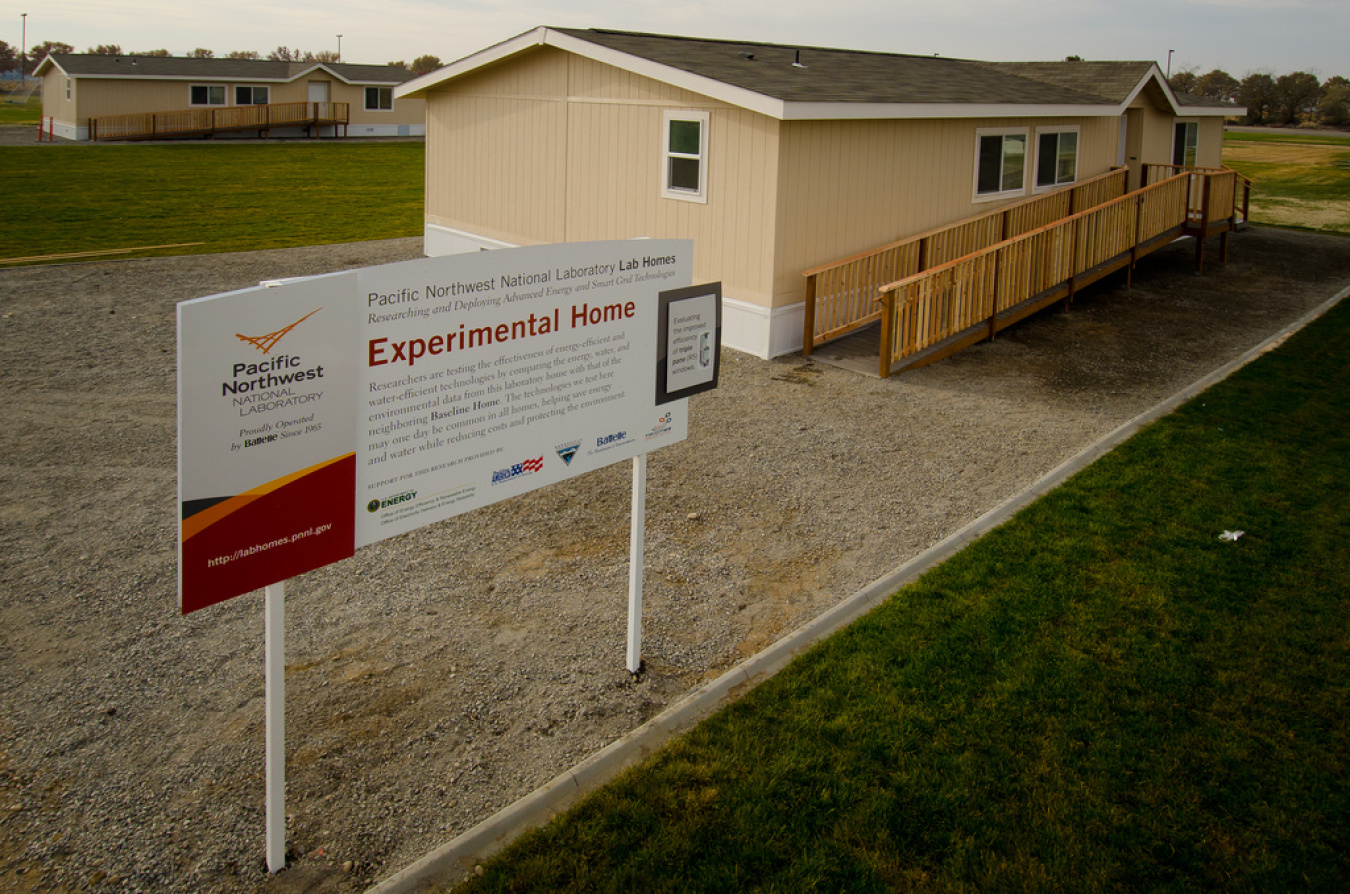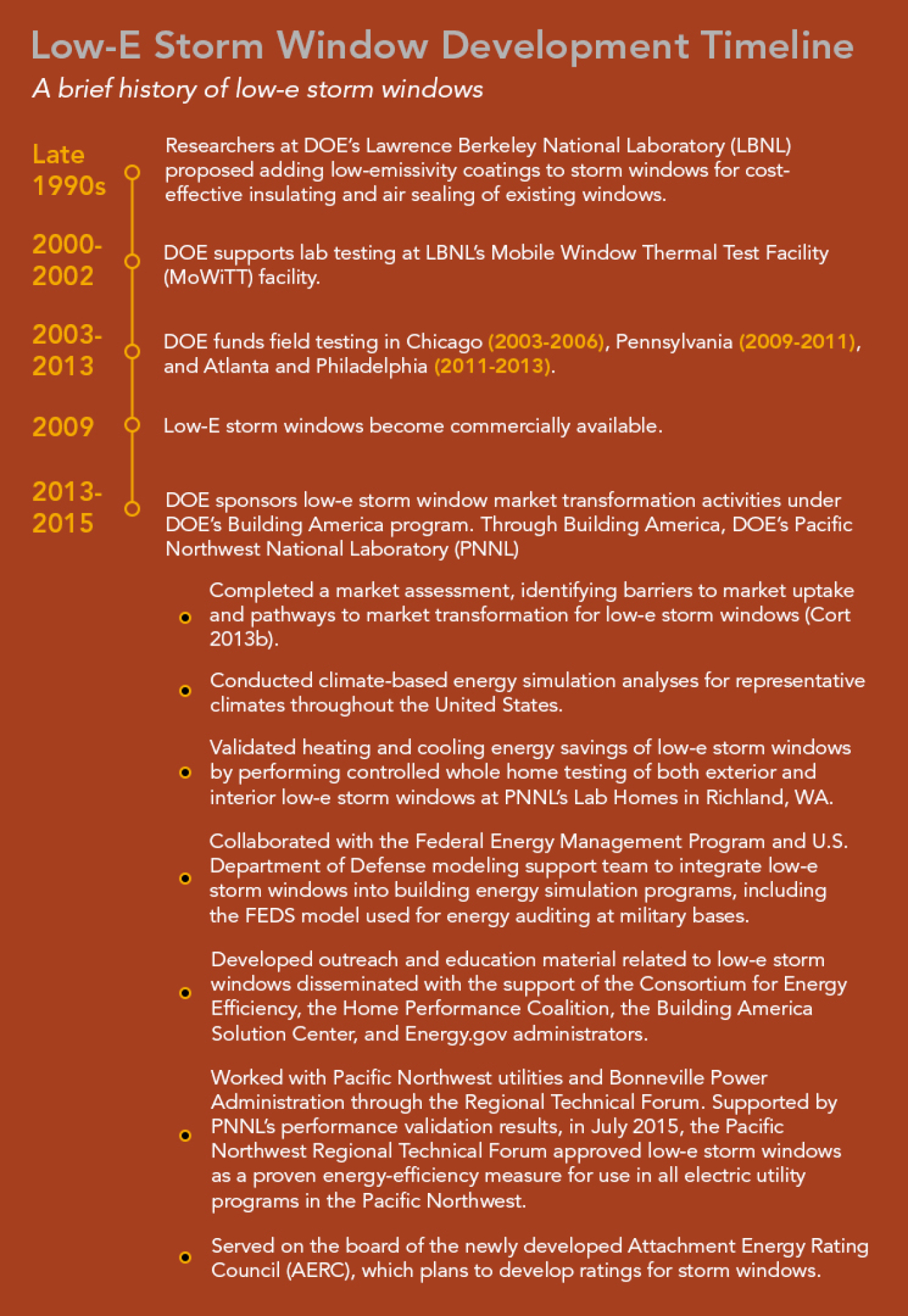Since 2013, the Pacific Northwest National Laboratory (PNNL) has been leading research and market transformation efforts for energy efficient storm windows, which they have identified as a key energy-saving measure for homeowners –- not to mention mo...
June 20, 2016
At the Energy Department's Pacific Northwest National Laboratory (PNNL), researchers are using two modular homes to test energy-efficient products and calculate their energy savings. Researchers test new technologies in the Experimental home (pictured above), while the Baseline home (not pictured) serves as a control and doesn’t get changed during any of the experiments. | Photo courtesy of PNNL.

Photo courtesy of PNNL.
Pacific Northwest National Laboratory provided original content for this article.
Energy efficient storm windows are rapidly gaining traction in the market, thanks to research and demonstrations led by Pacific Northwest National Laboratory (PNNL). These technologies can be be an easy-to-adopt energy-saving measure for homeowners, while also offering modern design appeal and environmental benefits. In January 2016, these efforts helped lead to ENERGY STAR releasing a draft specification for storm windows in January 2016—a key step to advancing market adoption of this energy efficient technology. ENERGY STAR is currently finalizing the specification.
Highlights from PNNL's research include:
- New Low-emissivity (low-e) storm windows not only can improve the appearance of an older home, but can reduce heating and cooling costs by as much as 25% over the home’s original single-pane or double-pane windows.
- Research in the PNNL Lab Homes found that the low-e coating can improve overall energy savings by 10-15% over standard storm windows without the low-e coating.
- Low-e storm windows cost about 10% more than standard storm windows, but the PNNL research confirmed that this additional expense is cost-effective in all climate zones and with all types of windows.
- PNNL estimates that more than 90 million homes in the U.S. with single-pane or poor performing double-pane windows would significantly benefit from the addition of low-e storm windows.
- PNNL found that the savings investment ratio ranged from 1.2 to 3.2 across the different climate locations analyzed with a simple payback period of 4.7 to 12.9 years.
The PNNL Lab Homes site currently includes two test homes—the baseline home and the experimental home. These homes are identical in nearly every respect except for the equipment being tested. They are typical of existing homes in the Inland Northwest and, aside from experimental equipment, are equipped with appliances found in nearly every home: an electric stove, microwave, dishwasher, refrigerator, a washer and dryer, a water heater, and a heat pump HVAC system. In all of PNNL's experiments, the baseline home serves as an un-altered control home, while the experimental home is equipped with energy-efficient technologies. Researchers closely monitor energy and water use, environmental conditions (humidity), and indoor environmental quality in each home to look for differences between the two homes during their experiments.
By studying new energy efficient technologies in a setting that closely imitates real homes, PNNL researchers can get a better understanding of true energy savings potential for homeowners, as well as gain insights into how a technology might be improved. The technologies we test here may one day be common in all homes, helping save energy and water while reducing energy costs for homeowners and protecting the environment.
This research was published in the May/June Issue of Home Energy Magazine, in the article, “Low-E Storm Windows Gain Acceptance as a Home Weatherization Measure” (subscription required for full article).
The Building Technologies Office's Emerging Technologies and Building America programs funded this work. Along with PNNL, the following organizations contributed to to this research: Birch Point Consulting, Bonneville Power Administration, Efficiency Solutions, Larson Manufacturing Company, Lawrence Berkley National Laboratory, Northwest Energy Efficiency Alliance, Quanta Technologies, and the Pacific Northwest Regional Technical Forum.

